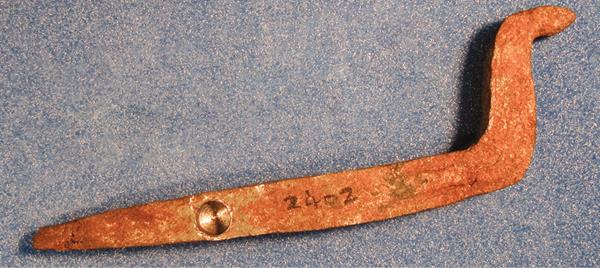
A. Snake idol
B. Pivot
C. Crank
D. Toy
E. Wedge
Answer: B. Pivot
Used in woodworking, this metal pivot comes from Thebes, Egypt, and dates to the seventh century B.C.E. Sir Flinders Petrie discovered it—along with another almost identical pivot—close to Queen Tausret’s mortuary temple toward the end of the 19th century. Petrie originally identified it as a type of crank for a brace, but recently Yigal Sitry of the University of Haifa has identified the item as a pivot in a lathe (a machine for working wood). The lathe shapes the wood by holding and rotating it around a horizontal axis against a tool.
Both pivots measure about 4.5 inches in length. Their similarity implies that they were used together in the same machine. Currently they are housed in the Manchester Museum.
Previously it was thought that wood turning began in the New Kingdom of Egypt (c. 1550—1070 B.C.E.). However, a reevaluation of other New Kingdom artifacts, coupled with the identification of these pivots and numerous other artifacts, suggests that wood turning actually did not develop until the eighth or seventh century B.C.E.—during the Iron Age, when stronger metals were in circulation.
Already a library member? Log in here.
Institution user? Log in with your IP address.

